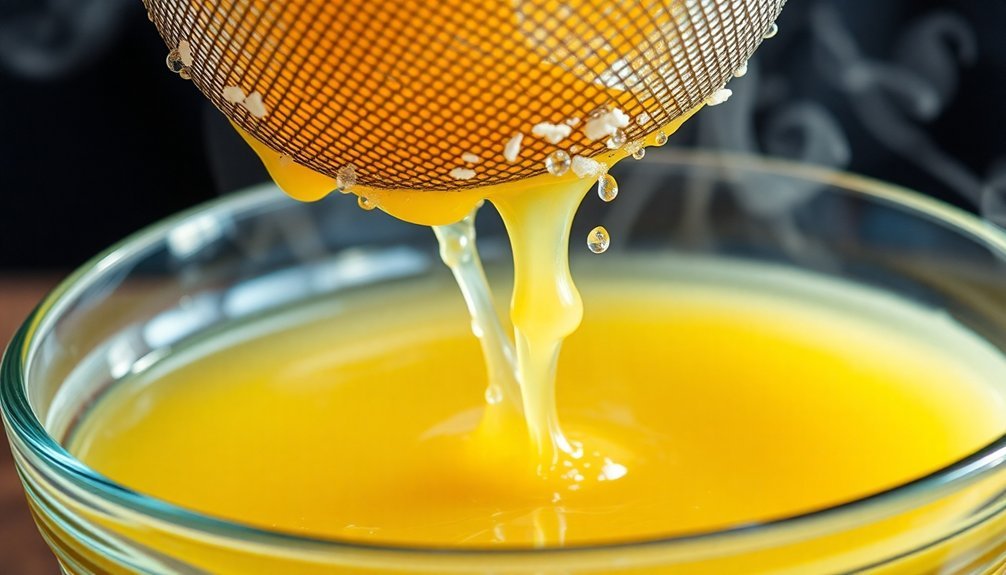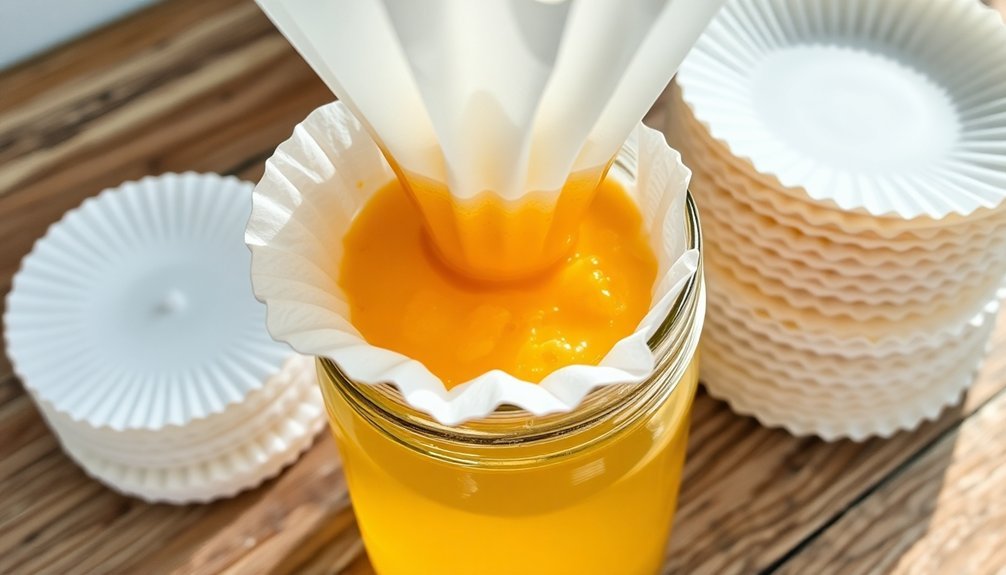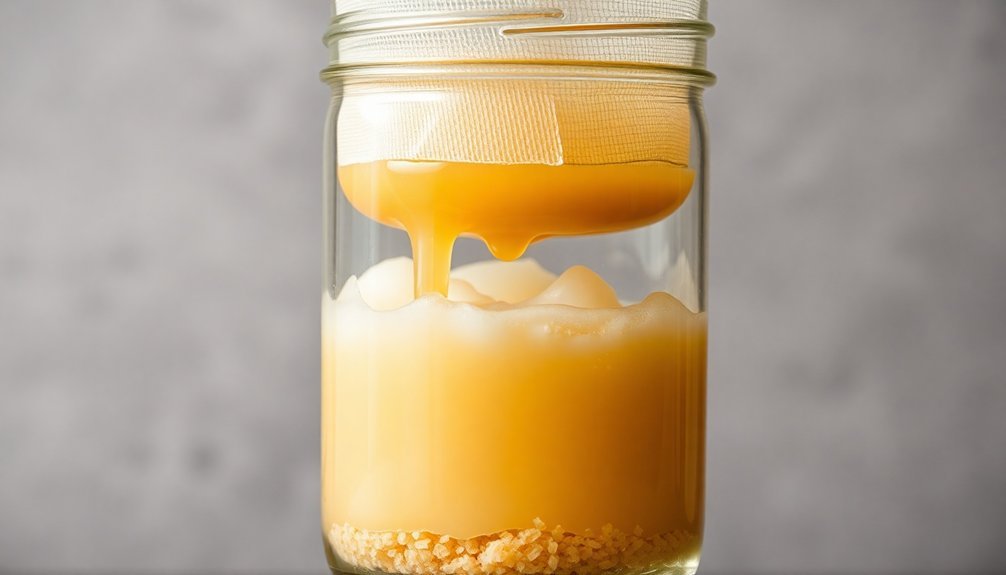You'll need clean, filtered animal fat to make quality soap, and there are three reliable methods to achieve this. First, strain hot rendered tallow through layered cheesecloth to catch solid particles. Next, try the coffee filter technique – pour slightly cooled fat through multiple filters for extra purification. Finally, use the sedimentation method by letting the fat settle and carefully separating the clear top layer. Each technique offers unique benefits for your soap-making journey.
Mesh Straining Method for Clear Tallow

Three key steps make mesh straining an effective method for achieving clear tallow. First, you'll need to pour your rendered tallow through a fine mesh strainer or layered cheesecloth while it's still hot and liquid. This helps filter out solid impurities like meat particles and connective tissue that could affect your soap's quality.
Next, you'll want to use multiple layers of cheesecloth for the best results. The extra layers will catch even the smallest particles, ensuring your tallow is as pure as possible.
Finally, let your strained tallow cool completely until it forms a solid block. Don't forget to clean your straining tools thoroughly after each use – this prevents contamination and maintains the quality of future soap batches.
Coffee Filter Technique for Pure Fat

While mesh straining works well for larger batches, the coffee filter technique offers a superior solution for small-scale soap makers.
You'll find this method particularly effective for purifying tallow and other animal fats without expensive equipment.
To use this technique, let your melted fat cool slightly before pouring it through a coffee filter placed in a funnel.
If you're aiming for exceptionally pure fat, consider using multiple filters – each one catches different-sized particles, resulting in a cleaner final product.
Be careful not to pour the fat while it's too hot, as this can destroy the filter and compromise your filtration process.
Once you've completed the filtering, store your filtered fat in an airtight container.
This will help preserve its quality and extend its shelf life for future soap-making projects.
Sedimentation Process for Clean Animal Oil

When seeking the purest animal fat for soap making, the sedimentation process offers a natural and effective filtration method.
You'll need to pour your rendered fat into a clean container and let it sit undisturbed, allowing gravity to work its magic.
During this resting period, impurities and solid particles will naturally sink to the bottom, leaving clear oil floating on top.
Through the power of gravity and time, unwanted particles settle at the bottom while pure, clarified fat rises above.
You'll want to carefully pour off this purified layer, making sure not to disturb the sediment below.
If you notice your oil isn't completely clear after the first round, you can repeat the process.
For best results, try combining this technique with an initial straining through cheesecloth to remove larger particles first.
Remember to always use clean containers to prevent introducing new contaminants during the sedimentation process.
Frequently Asked Questions
How Do You Filter Animal Fat?
Melt your animal fat gently in a pot, then pour it through a fine mesh strainer or cheesecloth. You'll want to repeat this process multiple times, removing impurities until the fat's completely clear.
How to Render Fat for Soap Making?
Cut your beef fat into small pieces, melt it slowly in a pot with water and salt. Strain through cheesecloth, then refrigerate until solid. Remove any sediment and repeat if needed for pure tallow.
Can You Make Soap Out of Animal Fat?
Yes, you can definitely make soap from animal fat. You'll need to render the fat into tallow first, then combine it with lye through saponification. It'll create a hard, long-lasting soap with excellent cleansing properties.
What Is the Best Animal Fat for Soap Making?
You'll find tallow from grass-fed beef is your best choice for soap making. It's rich in moisturizing properties and mimics human sebum. Lard's a great alternative, giving you creamy lather and softer consistency.
In Summary
You've now learned three reliable methods to filter animal fats for your soapmaking: mesh straining, coffee filtering, and sedimentation. Each technique offers unique benefits – mesh straining works quickly, coffee filters catch fine particles, and sedimentation's natural settling creates pure results. Choose the method that fits your time and clarity needs, and you'll have clean, filtered fat ready for creating homemade soap.





Leave a Reply